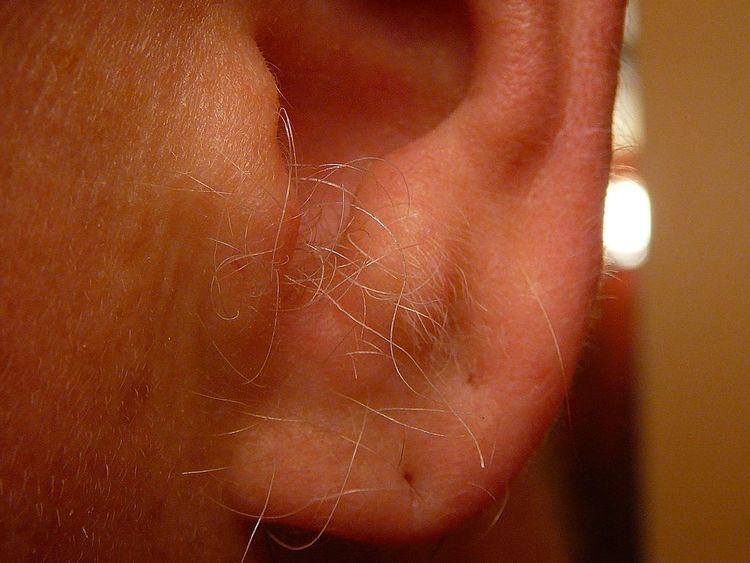 | ||
Ear hair generally refers to the terminal hair arising from folliculary cartilage inside the external auditory meatus in humans. In its broader sense, ear hair may also include the fine vellus hair covering much of the ear, particularly at the prominent parts of the anterior ear, or even the abnormal hair growth as seen in hypertrichosis and hirsutism. Medical research on the function of ear hair is currently very scarce.
Contents
Hair growth within the ear canal is often observed to increase in older men, together with increased growth of nose hair. Visible hair that protrudes from the ear canal is sometimes trimmed for cosmetic reasons. Excessive hair growth within or on the ear is known medically as auricular hypertrichosis. Some men, particularly in the male population of India, have coarse hair growth along the lower portion of the helix, a condition referred to as "having hairy pinnae" (hypertrichosis lanuginosa acquisita).
Structure
Hair is a protein filament that grows from follicles in the dermis, or skin. With the exception of areas of glabrous skin, the human body is covered in follicles which produce thick terminal and fine vellus hair. It is an important biomaterial primarily composed of protein, notably keratin.
Clinical significance
Society and culture
Anthony Victor, from Madurai, India is recognized by Guinness as having the longest ear hair in the world, measuring 18.1 cm.
